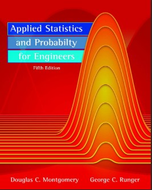Statistics
Applied Statistics and Probability for Engineers 5th Edition solutions
Author: Douglas C. Montgomery, George C. Runger
Publisher: Wiley
ISBN: 9780470053041
Buy the book
Select Chapter:
